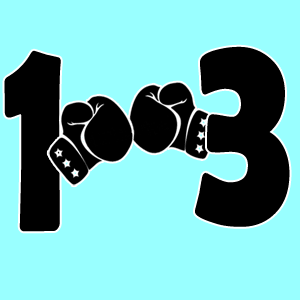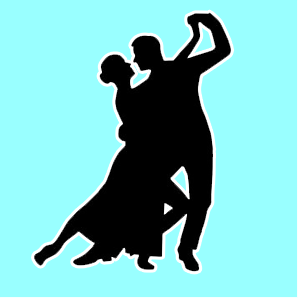Talking about it to a few people recently made me realize that "musicality" is not a commonly defined term and that maybe you would like to know what it is and why you should care. This turned out to be a huge undertaking. After writing way too much, I have decided to split the topic up into several smaller pieces.
 First, an umbrella definition of musicality. In my mind, musicality (in dance) is the result of dancers using steps, motions, and changes to their rhythms to reflect the unique character of the particular song they are dancing to. In buzz-words, it's their connection to the music. You're not dancing to a metronome, right? First, an umbrella definition of musicality. In my mind, musicality (in dance) is the result of dancers using steps, motions, and changes to their rhythms to reflect the unique character of the particular song they are dancing to. In buzz-words, it's their connection to the music. You're not dancing to a metronome, right?
You can split musicality into two types: structural and aesthetic. Structural musicality involves accenting the appropriate beat within the measure and reflecting the beginnings/endings of phrases. Aesthetic musicality is the act of accenting changes in the melody, frequently the vocals, and other more artistic parts of a song, things like breaks, highlights, and long notes. All these things absolutely can overlap, and it can be pretty awesome when they do. Today, we are going to talk about structural musicality - a super-tool for leaders and followers alike.
Measures or bars and accenting the appropriate beat(s)
Music is made of measures, also called bars: think of them as words in an essay. The typical piece of music, especially dance music which tends towards predictability, defines how long its measure is right at the beginning and sticks with that length for the entire song. The majority of dance music has 2, 3, 4, or 6 beats per measure.
Waltzes, for example, have 3 beats per measure, where the first beat is the strongest and so your first step should be the biggest and most dramatic (usually, there are always exceptions). Over the course of my dancing life, I've seen many people dance waltz using a chasse step (step-close-step), which naturally puts a pop on the middle beat (when you bring your feet together) or a settling on the last beat. Both of which are out of sync with the music, and really set my teeth on edge. I'm not saying you can't chasse in Waltz, but you can't really use it as your 1-2-3 without a lot of work to change the natural motion of the chasse. Listen to this song for a clear example of a hefty 1 in a Waltz: https://youtu.be/HWE5Mo0ik2I
 Latin music typically has 4-beat measures where, like waltz, the first beat is the strongest. Sometimes it's the third beat. Sometimes the first and third are duking it out for who's strongest, giving us dance nerds something to argue about: should Rumba start with quicks or slows?!? One nice thing about Latin dances, is that they almost all have a 4 beat structure, making it easy to fit the dance to the music. Getting musicality in your Latin dances is frequently a matter of getting to, holding, and milking slows. Here's an example of a non-Latin song with a Latin-style emphasis: https://youtu.be/aJOTlE1K90k. And a great Cha Cha that illustrates the highlighted 1 nice and clear: https://youtu.be/gcIOVt4J8po Latin music typically has 4-beat measures where, like waltz, the first beat is the strongest. Sometimes it's the third beat. Sometimes the first and third are duking it out for who's strongest, giving us dance nerds something to argue about: should Rumba start with quicks or slows?!? One nice thing about Latin dances, is that they almost all have a 4 beat structure, making it easy to fit the dance to the music. Getting musicality in your Latin dances is frequently a matter of getting to, holding, and milking slows. Here's an example of a non-Latin song with a Latin-style emphasis: https://youtu.be/aJOTlE1K90k. And a great Cha Cha that illustrates the highlighted 1 nice and clear: https://youtu.be/gcIOVt4J8po
 Swing music also has 4 beats per measure in spite of having a 6 beat basic. Unlike Waltz and most Latins, Swing emphasizes the second beat. So, you should hear 1 -2- 3 -4- when listening to a swing song, giving you two 2-beat pairs, each with a light beat and a heavy beat. To reflect that in your dancing, you want to accent the second beat in triple steps and delay slows in single time swing. This is why little-little-big is a thing and you can get away with little-little-little or big-big-big, but if you do a big-little-little you're doing more of a polka than a swing. Here's some swing music with a clear emphasis on the 2s: https://youtu.be/Wh__udyczFM Swing music also has 4 beats per measure in spite of having a 6 beat basic. Unlike Waltz and most Latins, Swing emphasizes the second beat. So, you should hear 1 -2- 3 -4- when listening to a swing song, giving you two 2-beat pairs, each with a light beat and a heavy beat. To reflect that in your dancing, you want to accent the second beat in triple steps and delay slows in single time swing. This is why little-little-big is a thing and you can get away with little-little-little or big-big-big, but if you do a big-little-little you're doing more of a polka than a swing. Here's some swing music with a clear emphasis on the 2s: https://youtu.be/Wh__udyczFM
I could go on and describe the measure structure of every dance style I know: Tango, Nightclub 2-Step, Fox Trot, etc, but let me say this instead - they all have unique characteristics and they are sometimes subjective. Some music makes use of multiple structures making it possible to dance multiple styles to that track. You and I could be standing together in the same room and listening to the same song and disagree  about which beats are strongest because I'm listening to the base line and you're listening to the drums. I actually love watching people doing a good job of dancing a style that I didn't think of to a song that I thought I had pegged. It feels like that moment when you start seeing faces instead of the vase. about which beats are strongest because I'm listening to the base line and you're listening to the drums. I actually love watching people doing a good job of dancing a style that I didn't think of to a song that I thought I had pegged. It feels like that moment when you start seeing faces instead of the vase.
Why does it matter?
If you are accenting the wrong beat, you will consistently look and feel off beat, even if you're actually dancing at the correct speed. You will probably try to dance faster than you need to in order to fix that wrong feeling, which makes the dance more work. Or you might shuffle a step or two, messing up your weight changes which in turn will mess up other things. Instead of helping you, the music will end up feeling like it is working against you.
I got a bunch of my early partner dance experience at a country dance place called the Round Up, just outside of Harrisonburg, Va. The partner dances there were limited to Swings (East and West Coast), Cha Cha, Waltzes, and Two-Steps. At the start, I couldn't tell the difference between a Cha Cha and a Swing or a Two-Step and a Swing. In fact, I probably thought that everything that was not a Waltz was a Swing, because Swing was what I knew how to do. It took months for me to realize some of those songs were harder to swing to than others. Once I did, dancing got so much easier.
Finally, most of the patterns and moves in these dances are based on their particular structure. Although it may be hard to get the techniques at first, many more advanced moves really depend on them for success. If you don't learn this type of musicality at some point, your dancing will eventually get stuck. Do you need to master it right now? No, you really don't, but you would really benefit from starting to work on it along with your other goals.
Reflecting the beginnings/endings of phrases
Phrases, verses, and choruses are groups of measures that go together - think of them as sentences or paragraphs. They can be various lengths within a single song, which can seriously make your eyes cross if you get too hung up on analyzing them. But a couple of structures are common and ready for you to use as a starting point.
 One very common grouping is of two measure pairs. This is why you can (and maybe should) count to 8 in a lot of songs that have a 4 beat measure. It's why we almost always count to 8 in Salsa, why Line Dances are written in 8 beat units. And it's why you can hear the difference between a 1 and a 4 in some waltzes even though both 1 and 4 represent the starting beat of the Waltz measure. Measures come in pairs. If you can hear the difference between the first and the second measures, and your partner starts you half way through the pair, it can seriously drive you crazy. This is why dancers count in 5-6-7-8 instead of 1-2-3-4. One very common grouping is of two measure pairs. This is why you can (and maybe should) count to 8 in a lot of songs that have a 4 beat measure. It's why we almost always count to 8 in Salsa, why Line Dances are written in 8 beat units. And it's why you can hear the difference between a 1 and a 4 in some waltzes even though both 1 and 4 represent the starting beat of the Waltz measure. Measures come in pairs. If you can hear the difference between the first and the second measures, and your partner starts you half way through the pair, it can seriously drive you crazy. This is why dancers count in 5-6-7-8 instead of 1-2-3-4.
Another common group is 8 or 12 measures long. Most songs use this structure for their verses and choruses. If you can figure out the length of the verse, you'll hear the same build within that phrase several times over during the course of the song, making the end of the phrase predictable without having to count all 8 or 12 measures. You'll get to hear a lot more about this structure in part 2 of this musicality conversation, coming in June's newsletter.
Why does it matter?
 There is a very real feeling of closure in music as it comes to the end of a phrase - a build up, climax, and resolution. And an upswing build at the beginning. It's the uppercase letter at the beginning of a sentence or the indentation at the beginning of a paragraph. You can totally ignore these feelings and keep right on dancing through the transitions, but it looks and feels fantastic to bring your pattern to completion at the same time the music brings its phrase to an end. If you can't do that (most of us don't plan that far ahead), just acknowledging the milestone you passed with a bit of extra energy will make you more in tune with the music. There is a very real feeling of closure in music as it comes to the end of a phrase - a build up, climax, and resolution. And an upswing build at the beginning. It's the uppercase letter at the beginning of a sentence or the indentation at the beginning of a paragraph. You can totally ignore these feelings and keep right on dancing through the transitions, but it looks and feels fantastic to bring your pattern to completion at the same time the music brings its phrase to an end. If you can't do that (most of us don't plan that far ahead), just acknowledging the milestone you passed with a bit of extra energy will make you more in tune with the music.
Finally - who doesn't like to add a bit of flair to the end of a dance? If you can train yourself to hear the coming end of a phrase, you will also be able to hear the end of the song coming in time to set up that signature dip or perfect picture line.
Can you ignore it and dance right through those transitions? Yes, absolutely, we all do it some of the time. In fact, it's way better than stopping completely. But, the more you think about them, and understand the significance, the better you will be at using the phrases to get what you want out of your dance.
Why should followers care about any of this?
Hmm. I'm going to stick to the nice way of answering this. When you are in a couple, you are quite literally in a partnership. It is almost ridiculously hard for a leader to implement any of these techniques if the follower is not on board and pulling their own weight. Not only that, but you can help make your leader aware of phrases, measures, and other spots that deserve emphasis on a visceral level.
 The biggest complaint I hear from people learning to follow is that it's hard to give up control - this is one place where you can have input in the outcome of the dance. Take a look at this video of Nino and Dawn (from May I Have This Dance) dancing a 3-Count Hustle and try to guess how many of those moments where Dawn held the shape a little bit longer than necessary were created by her seizing the opportunity. That doesn't happen with a follower who's just along for the ride. The biggest complaint I hear from people learning to follow is that it's hard to give up control - this is one place where you can have input in the outcome of the dance. Take a look at this video of Nino and Dawn (from May I Have This Dance) dancing a 3-Count Hustle and try to guess how many of those moments where Dawn held the shape a little bit longer than necessary were created by her seizing the opportunity. That doesn't happen with a follower who's just along for the ride.
In next month’s newsletter, I’m going to go into more depth on the showier side of musicality where the dancers hit breaks, accent swoops, and highlight trills in the melody. It’s super exciting and not easy to do. If you want more information about any of these concepts, ask your teacher or contact us on Facebook (Facebook.com/SapphireBallroom/). Some things are really better in person, though. So, if it’s confusing, think about signing up for some lessons: we'll make it make sense.
If you have anything to add to this, I would love to hear it! Email me your thoughts or comment on our facebook page - let's have a dialog. :) But keep in mind, part 2 is coming out next month: half the story is still coming!
Back to Top.
|